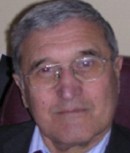

Plenary Lecture
Intense Hardening of Optimal Hardenability Steels Saves Alloy Elements, Energy, Improves Service Life of Machine Components and Makes Environment Cleaner

Dr. Nikolai Kobasko
Fellow of ASM International (FASM)
IQ Technologies Inc.
Akron, USA
&
Intensive Technologies Ltd
Kyiv, Ukraine
E-mail: NKobasko@aol.com
Abstract: Manufacturing steels of optimal chemical composition, combined with intensive quenching, is an important step to save essential alloy elements and make the environment cleaner. As a rule, alloy steels are hardened in oils or high concentration polymers to prevent crack formation during quenching. However, slow cooling in oils requires more alloy elements to provide the needed surface hardness and hardenability. To provide an optimal hardened layer and optimal residual stress distribution in machine components after intensive cooling, chemical composition of steel must be properly optimized to create high compressive residual stresses at the surface of steel parts after intensive quenching. Compressive residual stresses and high cooling rate within the martensite range result in additional strengthening of material. Both high compressive residual stresses at the surface of steel parts and additional strengthening (superstrengthening of the material) increase significantly their service life and save expensive alloy elements. After intensive quenching machine components, made of optimal hardenability steels, provide the following benefits: (1) high compressive residual stresses at the surface of steel parts are formed; (2) the super strengthening phenomenon in the surface layers take place; (3) mechanical properties of material at the core of steel parts are significantly improved due to high cooling rate during intensive cooling; (4) crack formation decreases due to compressive residual stresses at the surface and low tensile residual stresses at the core where material is softer. (5) distortion of steel parts decreases because the core does not swell. All of these factors increase service life of machine components, save energy and improve environment condition in heat treating industry.
These important problems are widely discussed in the plenary lecture and appropriate results of computer simulations of technological processes are provided.
Brief Biography of the Speaker: Dr. Kobasko received his Ph.D. from the National Academy of Sciences of Ukraine. He is a leading expert on quenching and heat transfer during the hardening of steels. He was the Head of the laboratory of the Thermal Science Institute of the National Academy of Sciences of Ukraine. He is Director of Technology and Research and Development for IQ Technologies, Inc., Akron, Ohio and supervisor of Intensive Technologies, Ltd, Kyiv, Ukraine. The aim of both companies is material savings, ecological problem-solving, and increasing service life of steel parts. He is an ASM International Fellow (FASM). Dr. Kobasko is the author and coauthor of more than 270 scientific and technical papers, several books and more than 30 patents and certificates. He received the Da Vinci Diamond Award and Certificate in recognition of an outstanding contribution to thermal science. Dr. Nikolai Kobasko was Editor-in-Chief and Co-Editor of the WSEAS Transactions on Heat and Mass Transfer; and is currently a member of the Editorial Board for the International ASTM Journal "Materials Performance and Characterization (MPC).